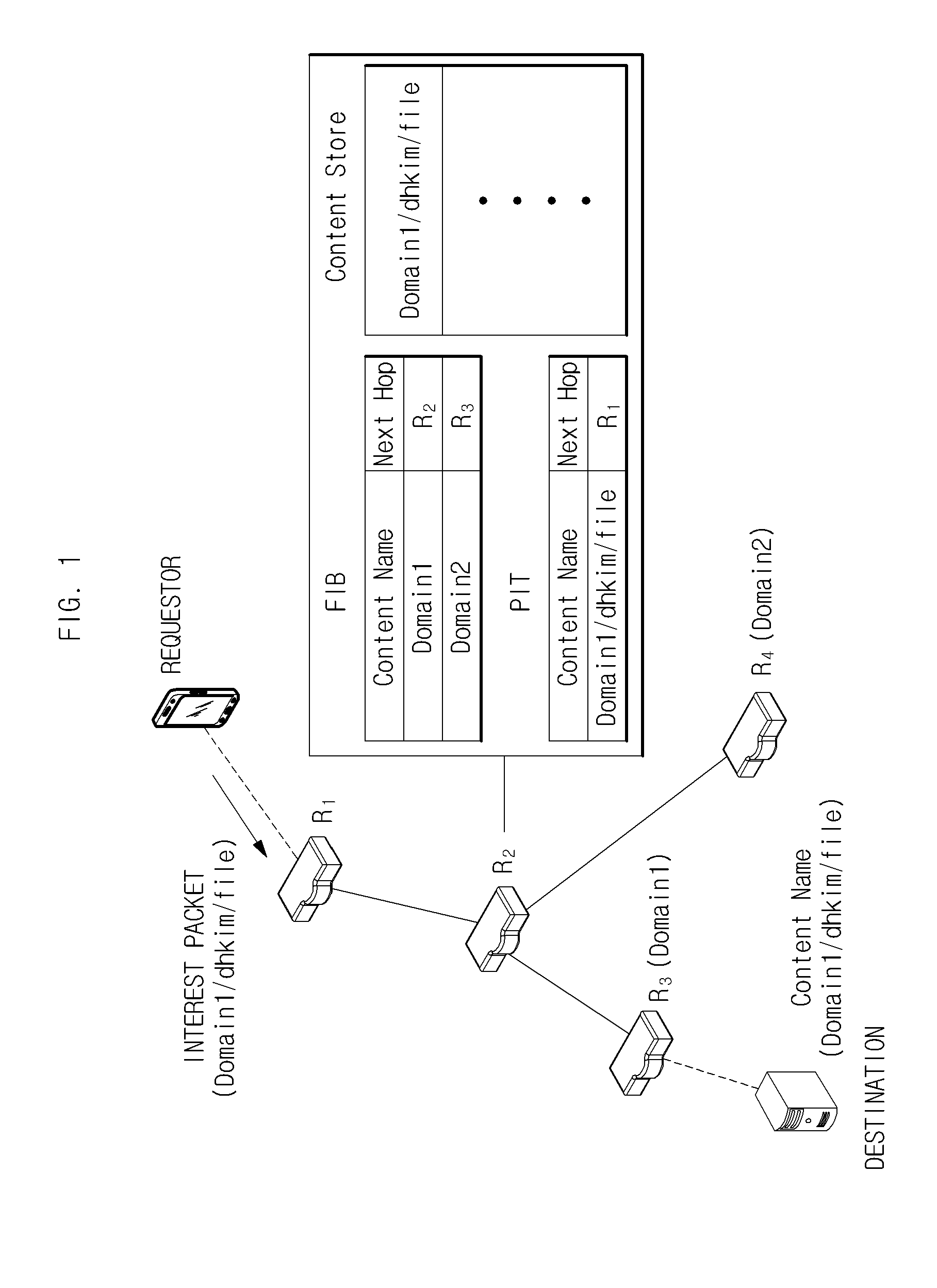Method of communicating content in mobile ad-hoc network and communication node included in mobile ad-hoc network
a mobile ad-hoc network and content technology, applied in the field of mobile ad-hoc network communication methods, can solve the problems of network failures, transmission power, limited resources, and cpus, and achieve the effect of increasing a valu
- Summary
- Abstract
- Description
- Claims
- Application Information
AI Technical Summary
Benefits of technology
Problems solved by technology
Method used
Image
Examples
Embodiment Construction
[0041]Exemplary embodiments of the present invention will be described in detail below with reference to the accompanying drawings. While the present invention is shown and described in connection with exemplary embodiments thereof, it will be apparent to those skilled in the art that various modifications may be made without departing from the spirit and scope of the invention.
[0042]In the description of the present invention, when it is determined that a detailed description of the related art of the invention unnecessarily obscures the gist of the invention, the detailed description will be omitted.
[0043]As used herein, the singular forms “a,”“an,” and “the” are intended to include the plural forms as well, unless the context clearly indicates otherwise.
[0044]Among terms used in this specification, “module,”“unit,”“interface,” etc. generally denote computer-related objects, for example, hardware, software, and a combination of hardware and software.
[0045]First, the terms mentione...
PUM
 Login to View More
Login to View More Abstract
Description
Claims
Application Information
 Login to View More
Login to View More - R&D
- Intellectual Property
- Life Sciences
- Materials
- Tech Scout
- Unparalleled Data Quality
- Higher Quality Content
- 60% Fewer Hallucinations
Browse by: Latest US Patents, China's latest patents, Technical Efficacy Thesaurus, Application Domain, Technology Topic, Popular Technical Reports.
© 2025 PatSnap. All rights reserved.Legal|Privacy policy|Modern Slavery Act Transparency Statement|Sitemap|About US| Contact US: help@patsnap.com



